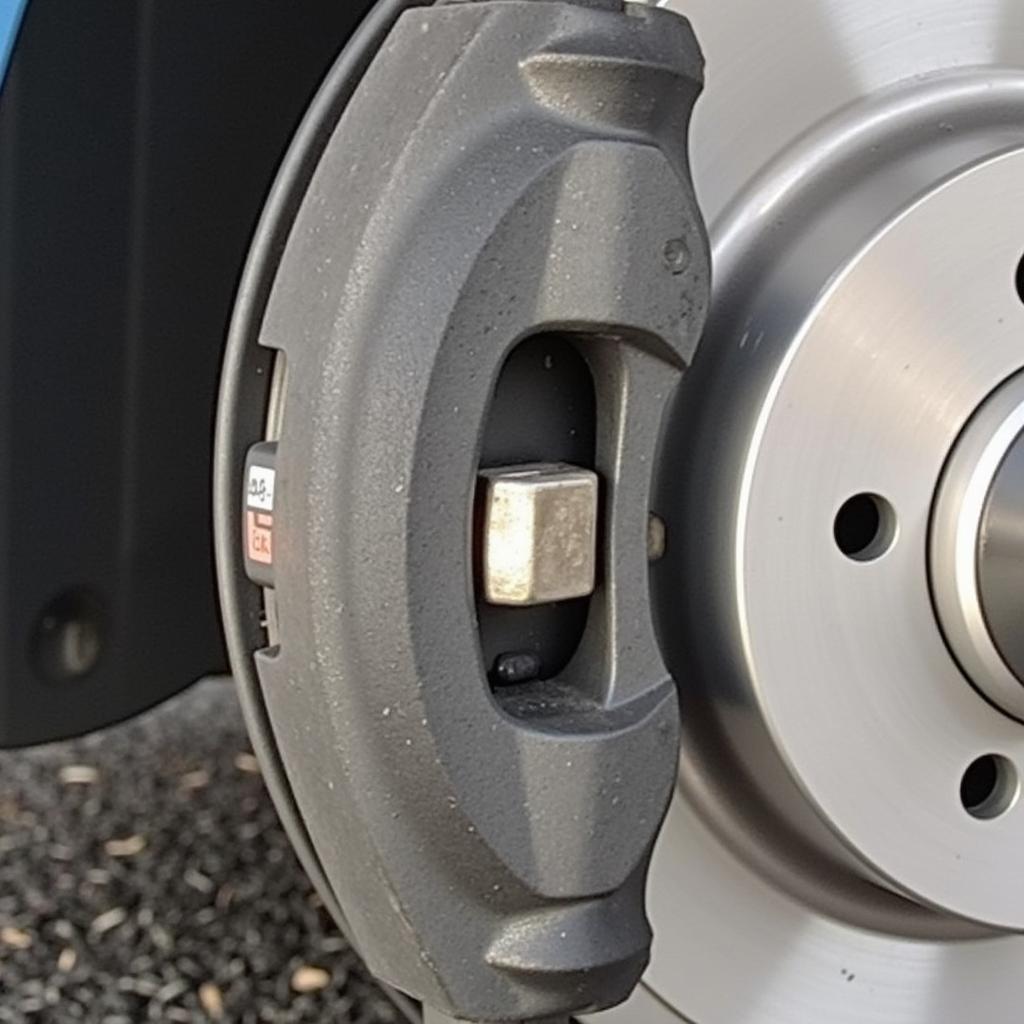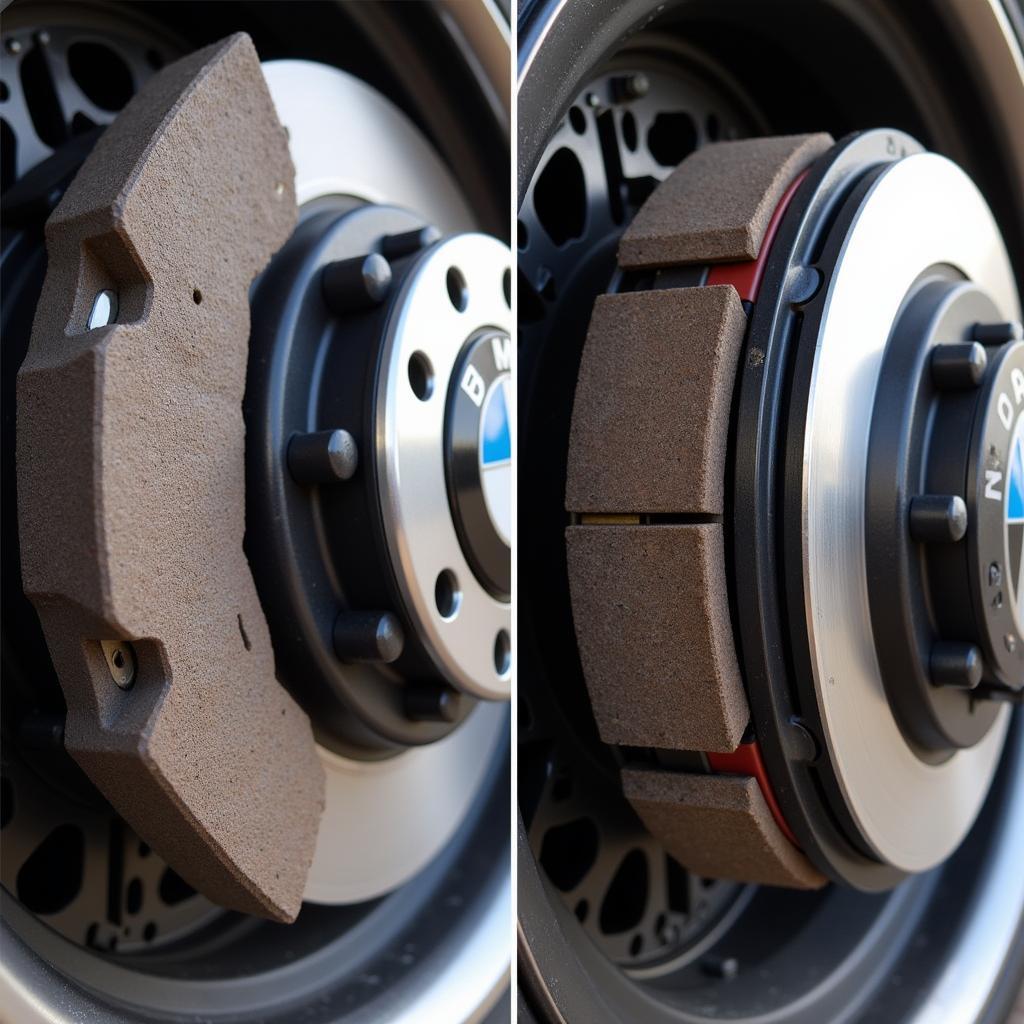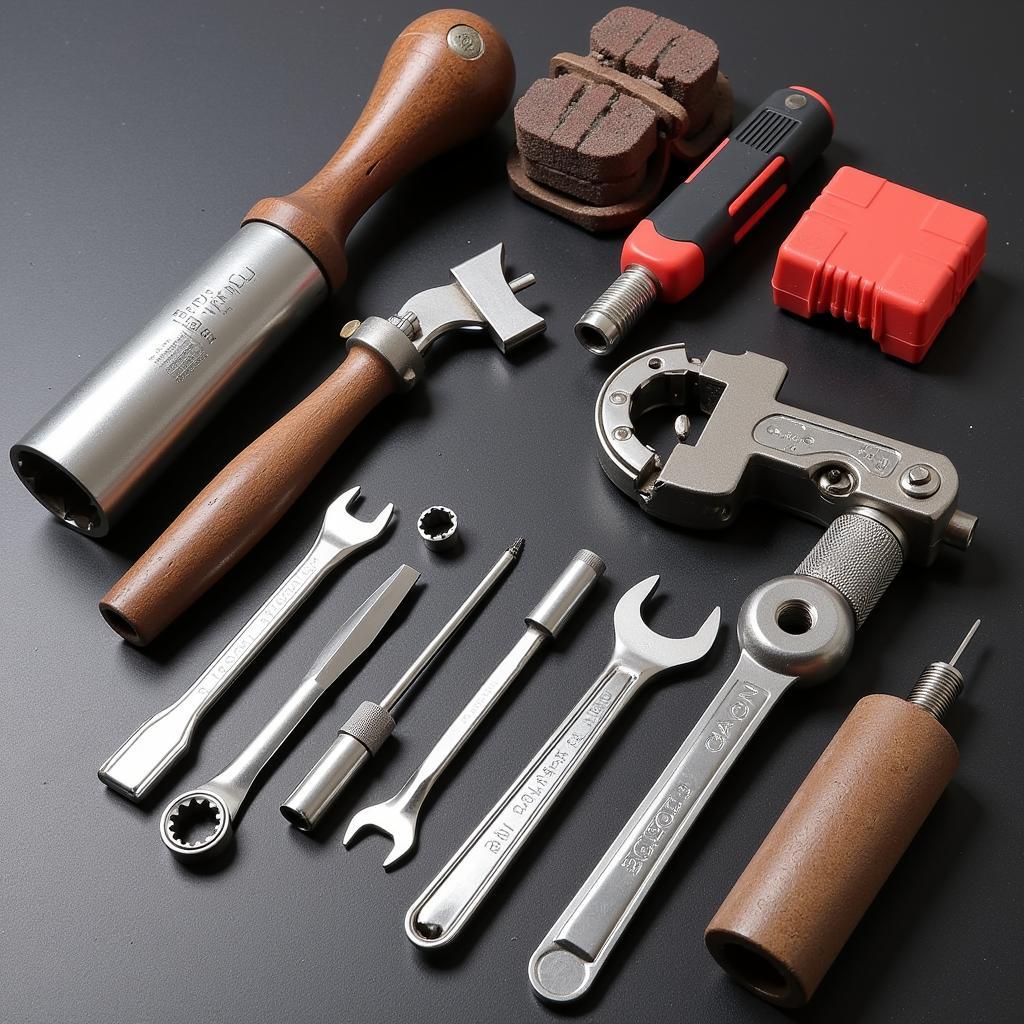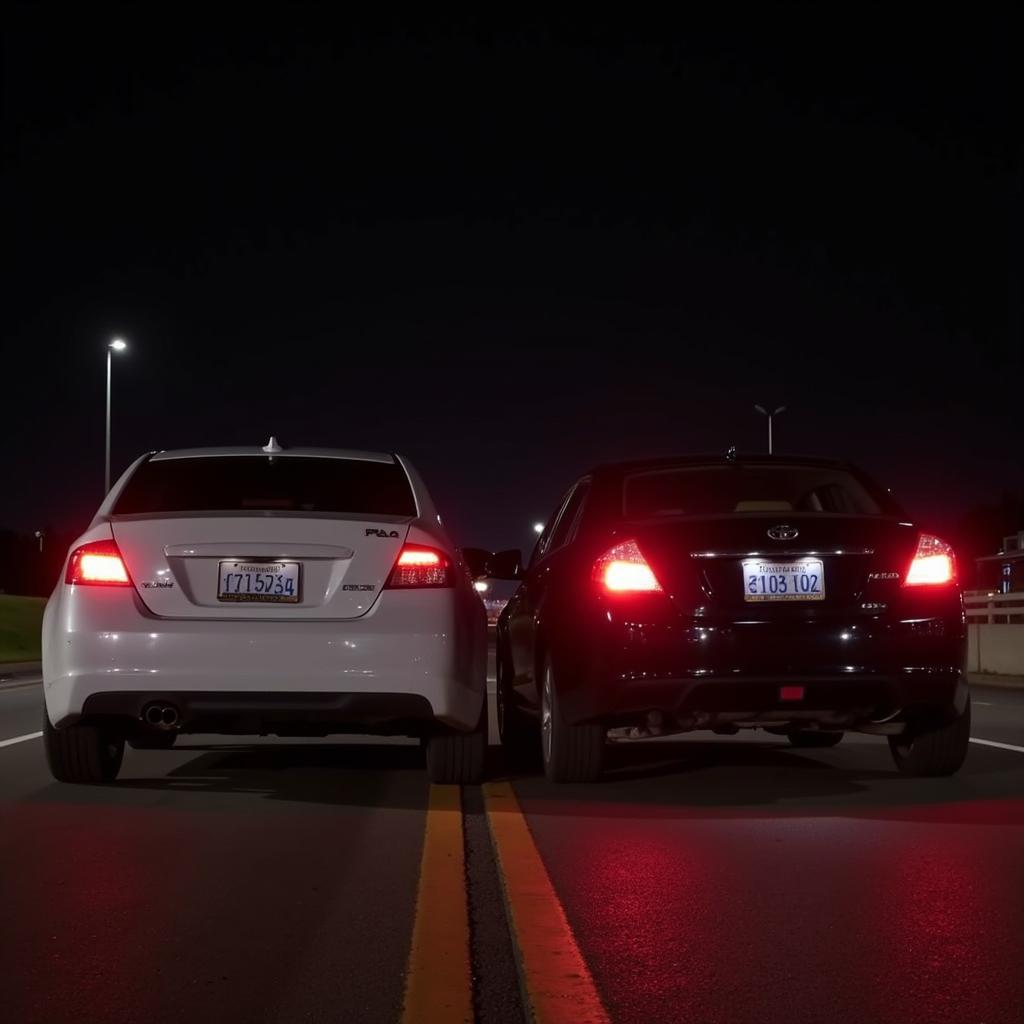The brake pad warning light on your 2006 BMW 325i is a crucial safety feature designed to alert you when your brake pads are nearing the end of their lifespan. Ignoring this warning can lead to reduced braking performance and potentially dangerous driving conditions. This comprehensive guide will delve into the common causes of the brake pad warning light, how to diagnose the problem, and the steps involved in replacing your brake pads.
Understanding Your BMW’s Brake Pad Warning System
Your BMW 325i utilizes a sensor-based system to monitor brake pad wear. Small sensors, known as wear indicators, are embedded within the brake pads themselves. When the brake pad material wears down to a certain point, the sensor comes into contact with the brake rotor, completing an electrical circuit. This triggers the brake pad warning light on your dashboard, signaling it’s time for a brake pad replacement.
Common Causes of a Brake Pad Warning Light
While worn brake pads are the most common culprit behind the warning light, there are other potential causes you should be aware of:
- Worn Brake Pad Sensors: Sometimes, the sensors themselves can become damaged or worn out, leading to a false warning light.
- Faulty Wiring or Connections: Corrosion or damage to the wiring harness or connections within the brake pad sensor system can disrupt the electrical circuit, triggering the warning light.
- Issues with the Brake Fluid: Low brake fluid levels can also trigger the brake pad warning light, often accompanied by a separate brake fluid level warning.
- Malfunctioning Instrument Cluster: In rare cases, a problem within the instrument cluster itself can cause the brake pad warning light to illuminate incorrectly.
 BMW Brake Pad Sensor Location
BMW Brake Pad Sensor Location
Diagnosing the Problem
Before assuming you need new brake pads, it’s essential to diagnose the root cause of the warning light:
- Visually Inspect Your Brake Pads: If possible, try to get a visual on your brake pads. Look for significant wear on the pad material. If the pads appear thin, they likely need replacement.
- Check Brake Fluid Levels: Open the hood and locate the brake fluid reservoir. Ensure the fluid level is within the minimum and maximum markings.
- Consult a Mechanic: If you’re unsure or uncomfortable performing these checks, it’s always best to consult a qualified mechanic specializing in BMW vehicles. They can accurately diagnose the issue using specialized diagnostic tools.
 Worn Brake Pads on a BMW
Worn Brake Pads on a BMW
Replacing Your BMW 325i Brake Pads
Replacing brake pads is a job best left to experienced mechanics, especially if you’re not familiar with automotive repair. However, if you’re mechanically inclined, here’s a general overview of the process:
- Gather Necessary Tools and Parts: You’ll need new brake pads specifically designed for your 2006 BMW 325i, a socket set, wrenches, a C-clamp, and possibly a brake caliper piston compression tool.
- Secure and Lift the Vehicle: Park your BMW on a level surface, engage the parking brake, and use jack stands to securely lift the vehicle.
- Remove the Wheels: Use a lug wrench or socket set to remove the lug nuts and take off the wheel where you’ll be replacing the brake pads.
- Retract the Brake Caliper Piston: Use a C-clamp or brake caliper piston compression tool to carefully compress the caliper piston back into its housing.
- Remove and Replace the Brake Pads: Once the caliper is compressed, remove the old brake pads and install the new ones, ensuring they are properly seated within the caliper bracket.
- Reassemble and Test: Reinstall the caliper, wheels, and lower the vehicle. Before driving, pump the brake pedal several times to restore brake pressure. Test the brakes in a safe environment at low speeds to ensure they are functioning correctly.
 Tools for Brake Pad Replacement
Tools for Brake Pad Replacement
Conclusion
Addressing a brake pad warning light promptly is crucial for your safety and the longevity of your BMW 325i. While this article provides general information, always consult your owner’s manual and consider seeking professional assistance from a qualified BMW mechanic. Remember, a well-maintained braking system ensures optimal performance and peace of mind on the road.

